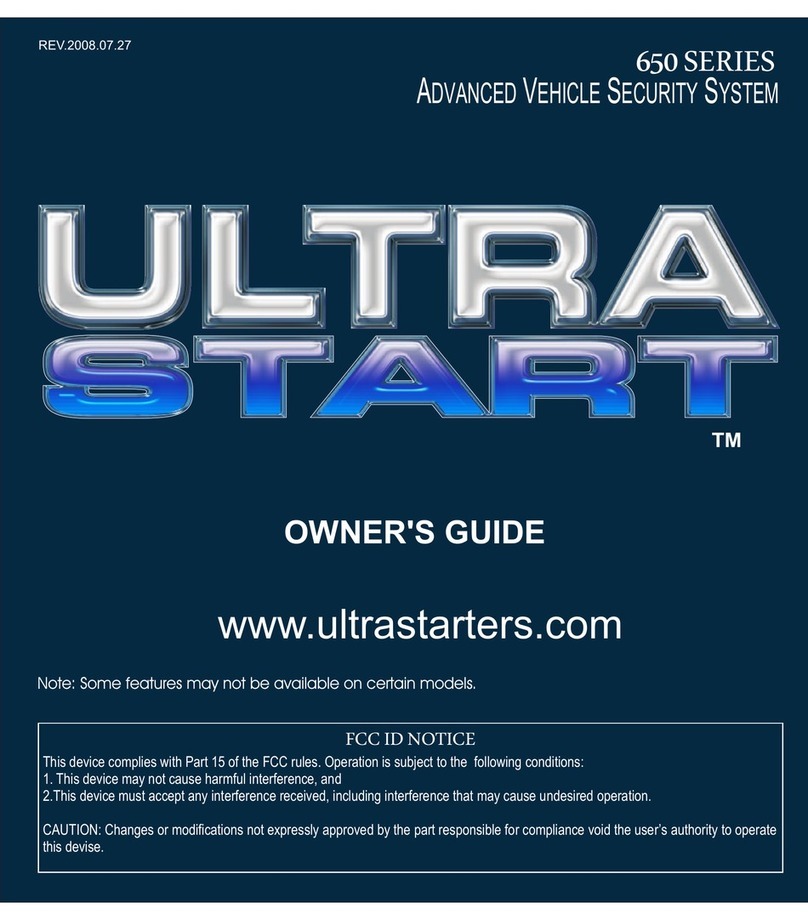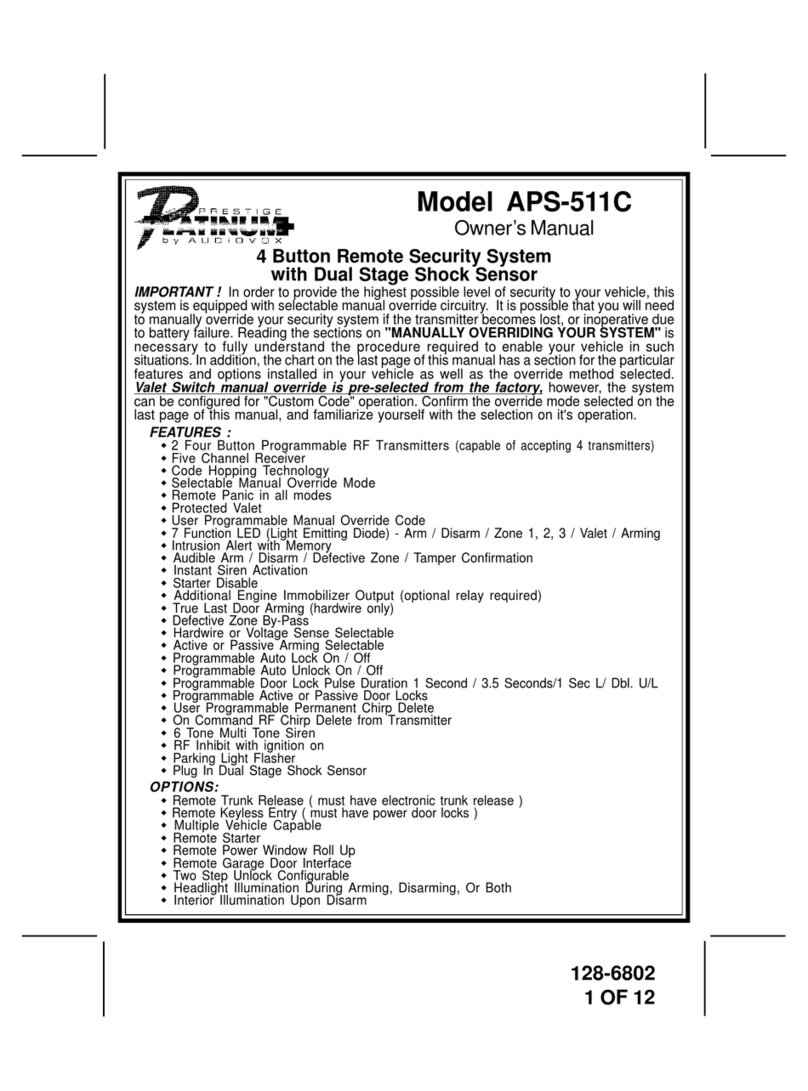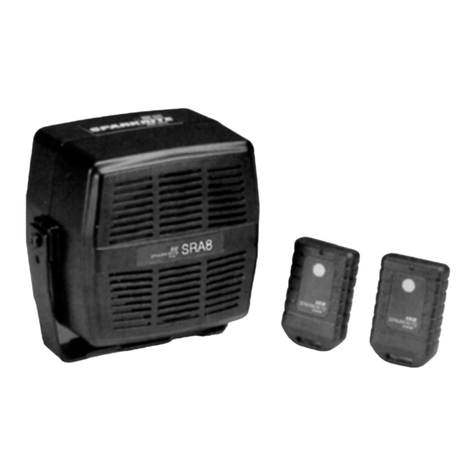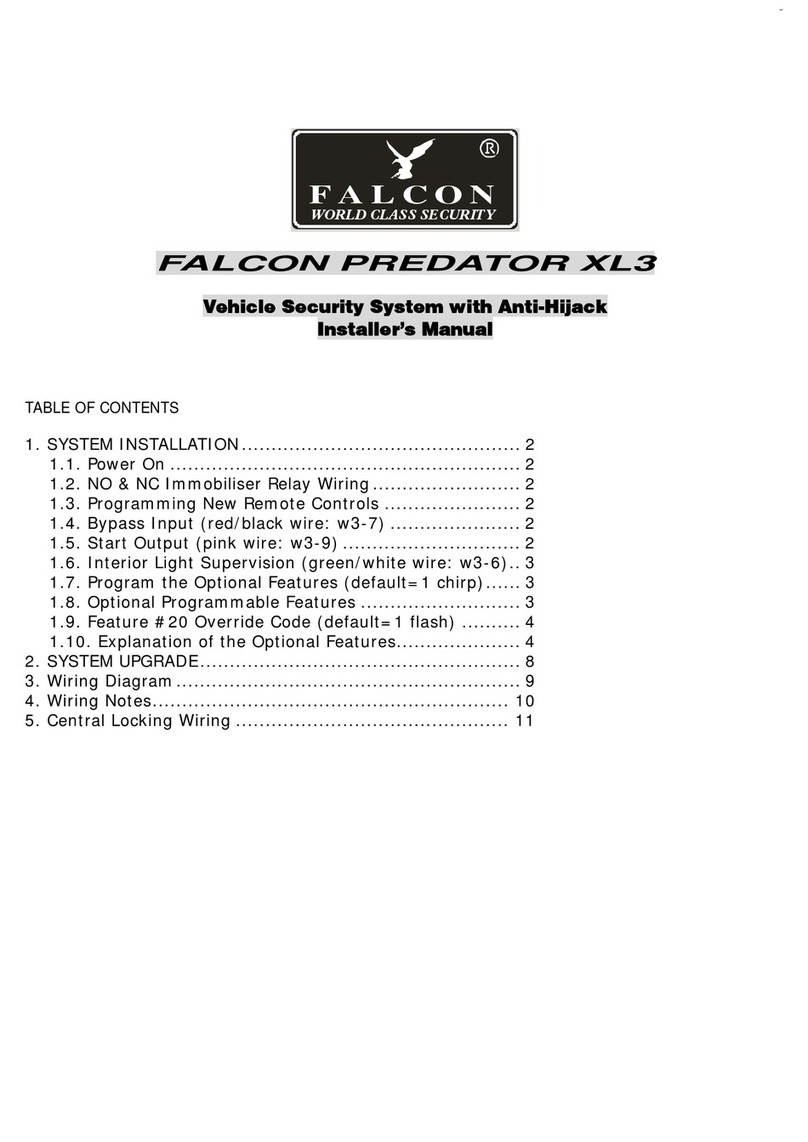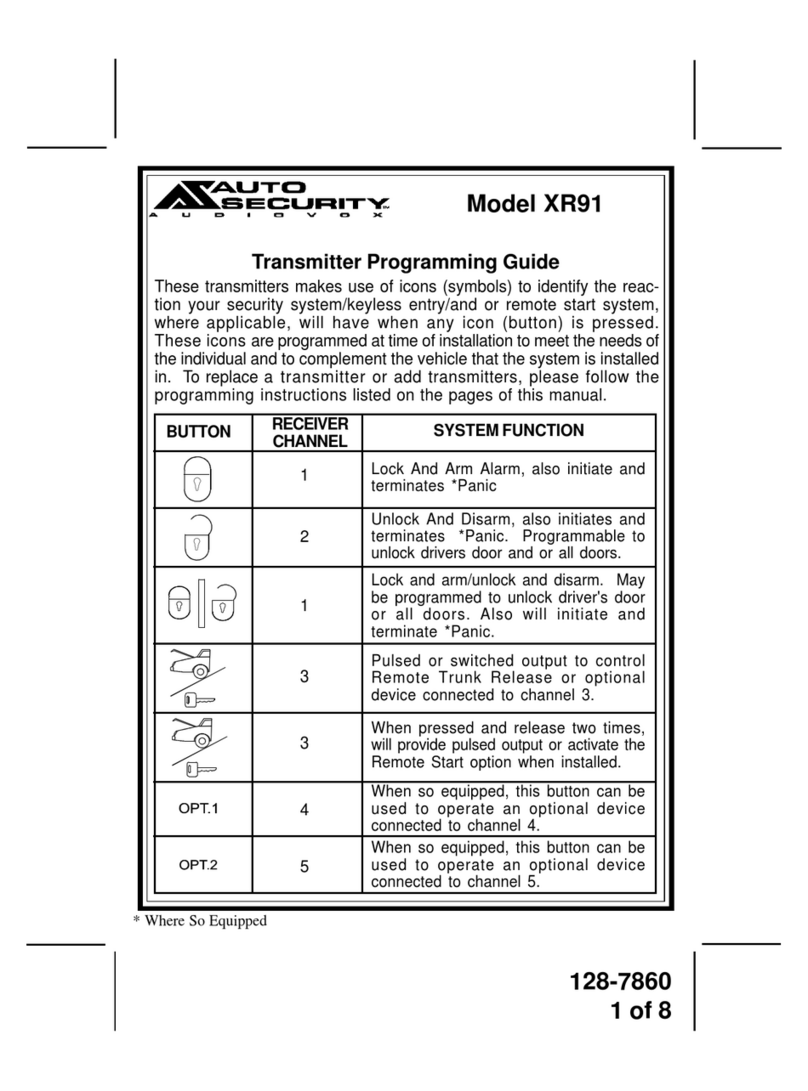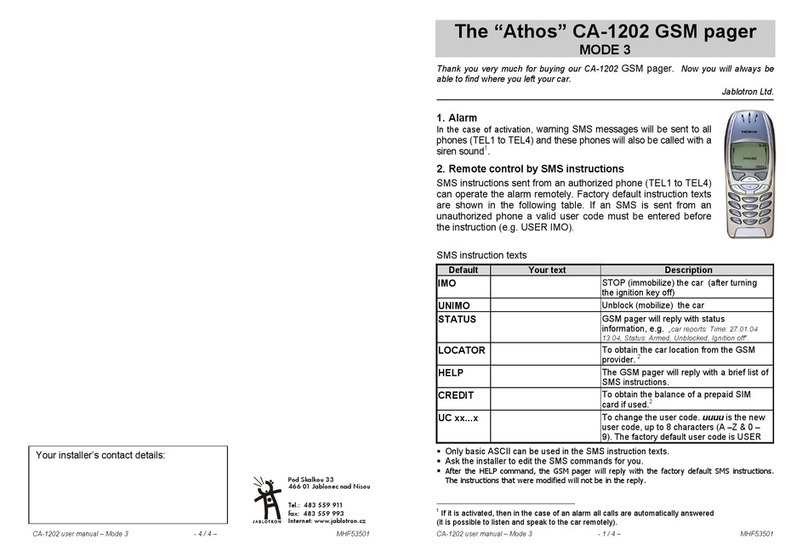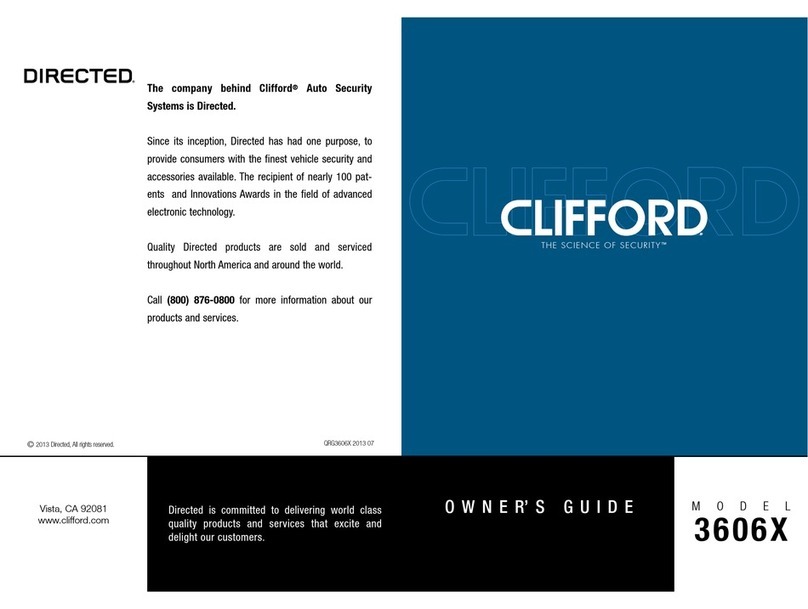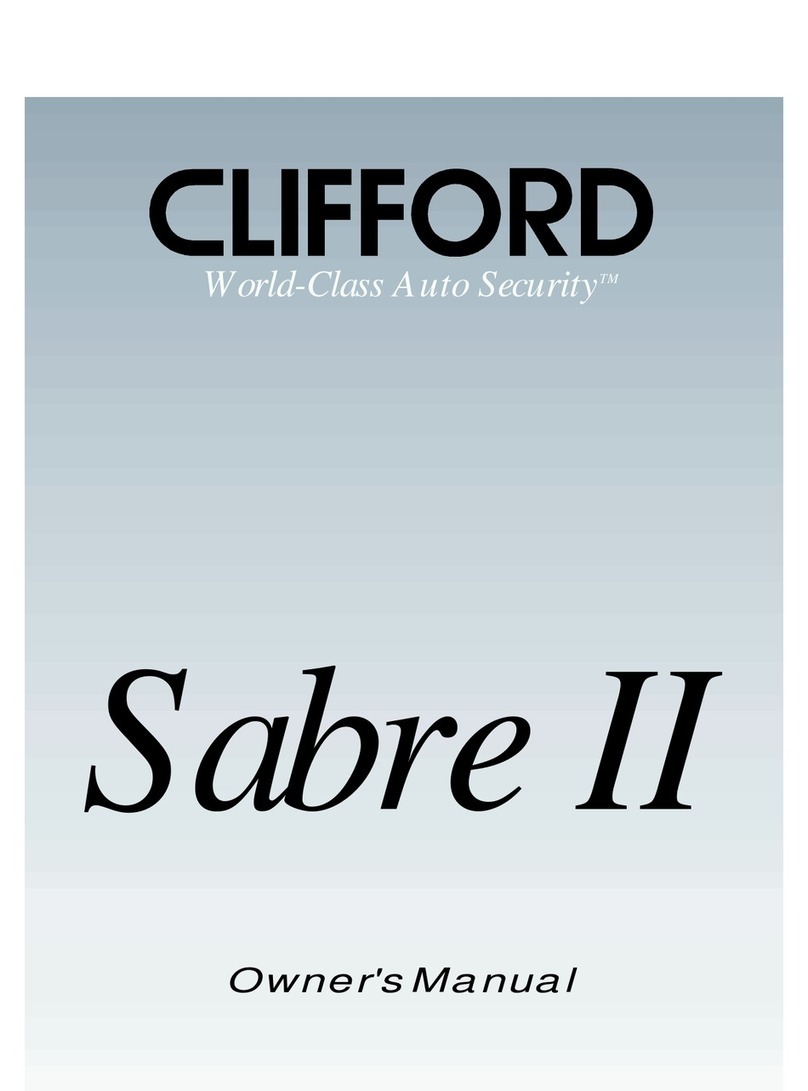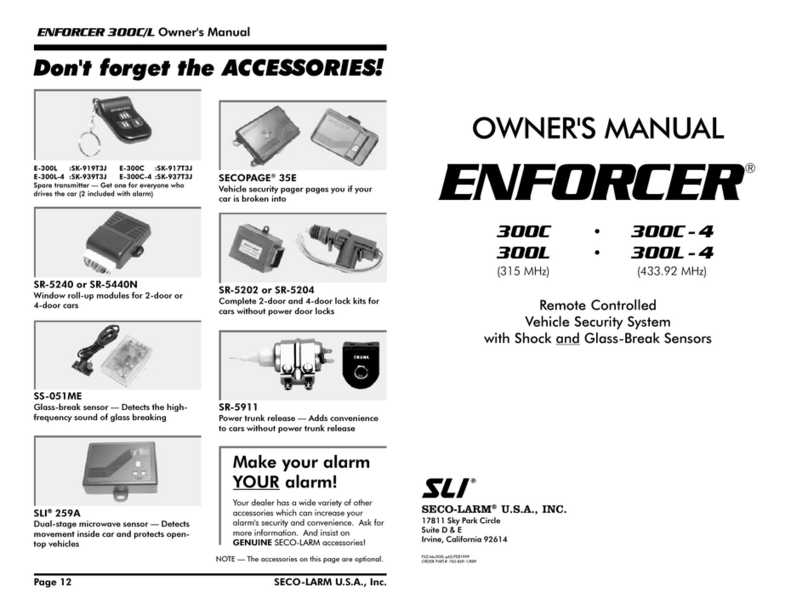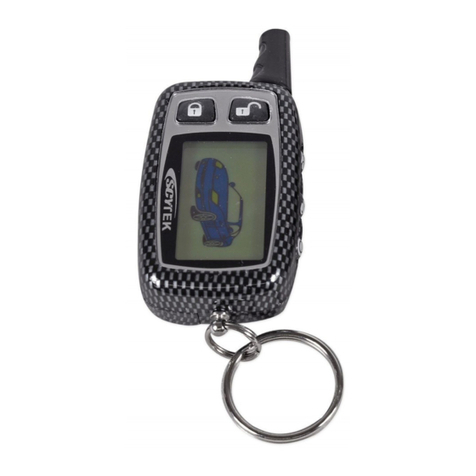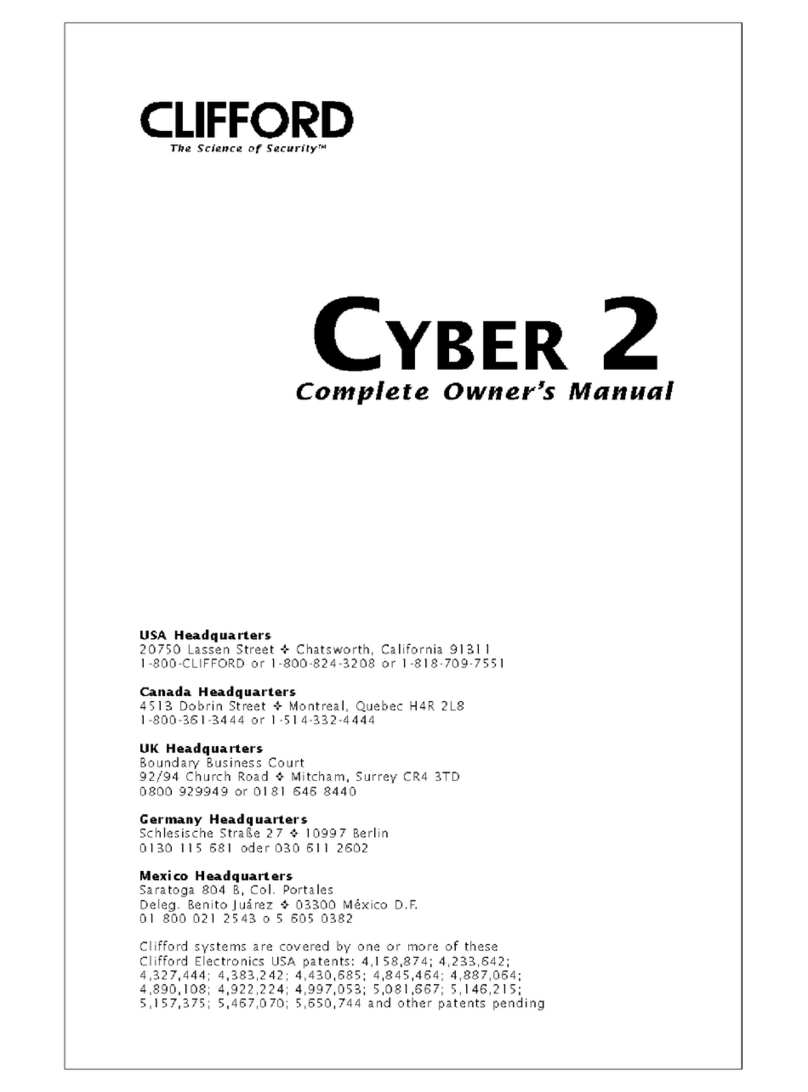1 CURRENT SENSE ON/OFF: This feature is used to defeat the current sensor of the unit. If turned off, the sys-
tem cannot detect when the vehicle doors open.
2 CURRENT SENSE DELAY 5 SECONDS/5 MINUTES: This feature selects the delay time before current sen-
sor can trigger the unit. In some vehicles, electric fans and other circuits may stay on after the ignition is turned off.
Selecting the 5 minute delay may prevent those systems from triggering the current sensor.
3 ARM/DISARM CHIRPS ON/OFF: This feature controls the chirps that confirm the arming and disarming of the
security system.
4 CODE HOPPING™ON/OFF: The system uses a mathematical formula to change its code each time the trans-
mitter and receiver communicate.This makes the group of bits or "word" from the transmitter very long.The longer
the word is, the easier it is to block its transmission to the unit.Disabling the Code Hopping™feature lets the receiv-
er ignore the Code Hopping™part of the transmitter word. As a result, the unit may have better range with Code
Hopping™off.
The system features a Doubleguard shock sensor inside the control unit. All adjustments to the sensor are made
using the transmitter.
To adjust the Warn Away level:
1. Disarm the system by pressing .
2. Within five seconds press and hold on the transmitter until the unit generates a
long chirp.
3. Release on the transmitter.
To test and adjust the current Warn Away setting:
Strike the vehicle to test the current setting. If the impact is detected the unit will chirp three or four times. If the
current setting is acceptable, do nothing and the unit will exit shock sensor adjustment mode. If the current setting
is unacceptable, press Button I to decrease the sensitivity or Button II to increase the sensitivity. Each time Button
I is pressed the unit will emit one chirp and the sensitivity is decreased one step. Each time Button II is pressed
the unit will emit two chirps and the sensitivity will be increased one step.There are 16 possible settings.When the
maximum or minimum setting is achieved the siren will emit a long chirp.
SHOCK SENSOR ADJUSTMENT
FEATURE DESCRIPTIONS
6
© 1999 Directed Electronics, Inc. N718W 7/99
